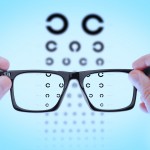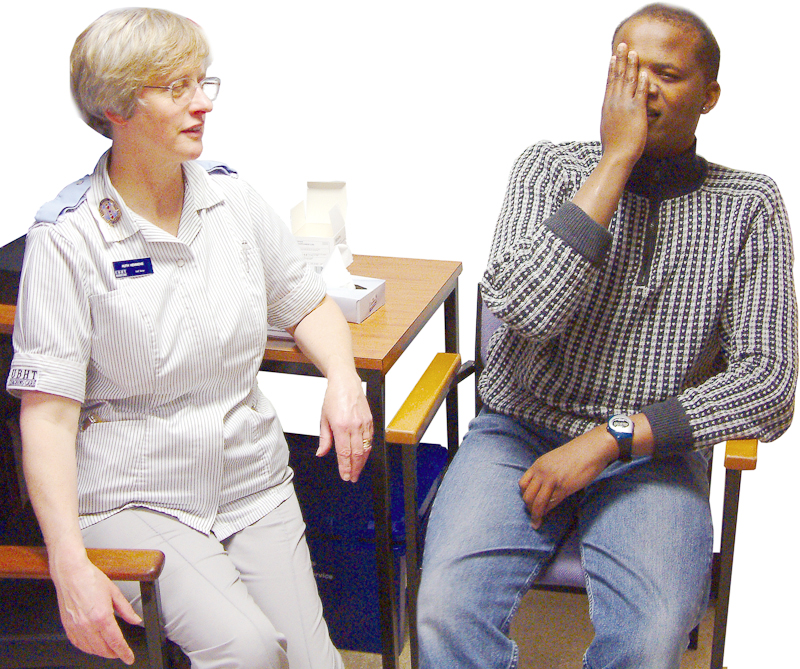
Research by SeeAbility and the RNIB suggests that adults with learning disabilities are ten times more likely to be blind or partially sighted than the rest of the population. If they have severe or profound learning disabilities, then they are likely to have serious sight problems.
There already exists some guidance for GPs on responding to vision problems and recently the College of Ophthalmologists produced a set of Quality Standards for Services for Patients with Learning Disabilities.
In addition there are the excellent practical guides to be found in the easy-read library at SeeAbility.
The researchers in this study were interested in particular in vision deficits in adults with Down syndrome, where it has been noted in previous research that the pattern of these deficits is similar to those accompanying Alzheimer’s disease in adults without learning disability.
Visual deficits can have a major impact on learning, cognitive functioning, communication and language as well as the development of social skills.
They hoped to develop a better understanding of the status of basic vision functions of adults with Down syndrome through the use of series of tests and comparisons with people without learning disabilities.
Method
What they did was to work with seven adults with Down syndrome, aged from 28–48. Each of the participants had been part of a broader longitudinal study, so were well known to the research team. They all had good verbal skills. Each participant had a variety of visual tests during six sessions within a 2-month period
Baseline measures were taken by an optometrist at the start of the research. During the tests, participants wore their own corrective lenses if needed, or were provided with the appropriate lenses in a trial frame.
the results were with those for adults without learning disability who were either younger (23 people, aged from 16-28 years) or older (6 people aged from 51–61 years).
They tested for a range of functionality using recognised tests. These included tests for
- Spatiotemporal contrast sensitivity functions
- Hyperacuities –
- Stereopsis – the perception of depth and 3-dimensional structur
- Vernier acuity – which measures the ability to discern a disalignment among two line segments or gratings
- Colour vision
All the participants with Down syndrome were able to complete all the tests.
Findings
All the adults with Down syndrome tested were found to have significant vision deficits.
- They found that in relation to contrast sensitivity, the adults with Down syndrome had lower contrast sensitivity thresholds, particularly marked at high spatial frequencies when compared to the younger adults without learning disabilities.
- When compared to older adults without learning disabilities, there were still reduced sensitivities, but these were not as pronounced as when compared with the younger adults.
- Two of the older adults with Down syndrome had no demonstrable stereopsis at all, and the remaining five had reduced stereopsis compared to those without learning disability.
- Those with Down syndrome had significantly higher verner acuity thresholds than the younger and older adults without learning disability.
- For colour vision, they found participants able to complete the tests and the range of scores suggested minor defects with colour discrimination.

All the adults with Down syndrome tested were found to have significant vision deficits
Conclusion and Comment
This is a very small study, looking at visual deficits in only seven participants, and as such mean that the results must be treated with some caution, but the consistent results across the participants suggest that this may be representative of what may be found in larger studies.
The researchers found significant visual deficits and interestingly, when compared to older adults without learning disabilities, their vision capabilities were worse than those of older adults without learning disability.
The authors set out a number of practical implications of their findings –
- Acuity loss will mean that fine details will not be detected unless objects are very close.
- Loss in lower spatial frequencies may mean loss of ability to recognise objects or faces, especially at distance.
- Poor stereopsis may also impact on gait and coordination.
They point out that the visual deficits found in their study have been found by other researchers in individuals with Alzheimer’s disease without learning disability, which opens up the possibility of the potential for specific visual deficits to be seen as ‘early markers’ for the onset of cognitive and behavioural deficits.
They also point out, quite reasonably that the quality of life for older adults with Down syndrome can be enhanced by
proper assessment of visual functioning and correction where possible or in appropriately modifying the visual environment to provide more salient visual cues.”
Which I think it would be reasonable to suggest for all adults with learning disabilities, which brings me once again to extol the virtues of the Seeability easy read guides.

Could specific visual deficits to be seen as ‘early markers’ for onset of cognitive and behavioural deficits?
Link
Krinsky-McHale, S. J., Silverman, W., Gordon, J., Devenny, D. A., Oley, N. and Abramov, I. (2014), Vision Deficits in Adults with Down Syndrome. Journal of Applied Research in Intellectual Disabilities, 27: 247–263 [abstract]

Visual deficits in adults with Down syndrome explored – The Learning Disabilities Elf http://t.co/9Ji1Mxs1ii
“…adults with learning disabilities are 10 times more likely to be blind or partially sighted”, via @learningdiself http://t.co/wCf23b8qf5
Hi there – we are delighted by your praise for SeeAbility’s work in this area. However, please can I ask if you would change our name to the correct SeeAbility rather than Seeability? Many thanks.Liz
Hi Liz – of course we can change it – apologies for the error,
john